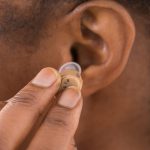Late last month, Johnson & Johnson suspended sales of power morcellators, tools used for uterine fibroid surgery, because of a potential risk of spreading uterine cancer. Since the FDA advisory and subsequent action by Johnson & Johnson, several prominent hospitals have announced they will stop utilizing power morcellators until further review is conducted.
W. Allen Hogge, M.D., chair of the Department of Obstetrics, Gynecology and Reproductive Medicine, answers questions about power morcellators, and explains why UPMC hasn’t suspended use of the tools.
Q. What is a power morcellator? What is it used for?
A morcellator is a device most frequently used to remove uterine fibroid tumors laparoscopically, or minimally invasively. Fibroids come in many different sizes, and some can be as large as an orange. Morcellators give surgeons the ability to remove the fibroids in pieces through small incisions. Without morcellators, many women would have to undergo open surgery to have their fibroids removed.
Q. What are the concerns causing Johnson and Johnson and the FDA to take these actions?
An anesthesiologist in Boston believes her advanced uterine cancer was spread when she underwent a minimally invasive hysterectomy that utilized power morcellators. She and her husband launched a campaign to raise awareness about the possibility of spreading previously undetected uterine cancer with these tools.
Q. Why is UPMC still using morcellators, when other hospitals are suspending their use?
It’s extremely important to understand that 99 percent of uterine fibroids are not cancerous. One in four women have uterine fibroids, and they can often be painfully debilitating. Minimally invasive surgery with morcellators offers our patients less pain, less blood loss and a faster recovery than an open surgery would. At UPMC, we are carefully reviewing our policies surrounding morcellators, and making sure every woman undergoing a surgery that utilizes them understands her risk and is able to provide her full, informed consent.
Q. If women who are planning on having surgery with these tools, or have previously undergone laparascopic surgery with morcellators, have concerns, who should they talk to?
They should talk with their ob-gyns, or even consider calling the Fibroid Treatment Center at Magee.
Q. Are there other options for women with fibroids if they don’t want to undergo surgery?
Fibroids can sometimes be managed through hormone treatment, but the scope of that treatment is limited. Uterine fibroid embolization, a procedure that cuts off the blood flow to the fibroid, is an excellent alternative to hysterectomy. However, any technique that does not remove the fibroid has the extremely small risk that it missed an early cancer of the uterus – the same concern that is being raised about morcellation. If we were to stop using power morcellators entirely, we would be saying we are going to stop treating uterine fibroids except by surgery through larger abdominal incisions. We would be ceasing to help a large number of women who are suffering over an extremely rare complication.









